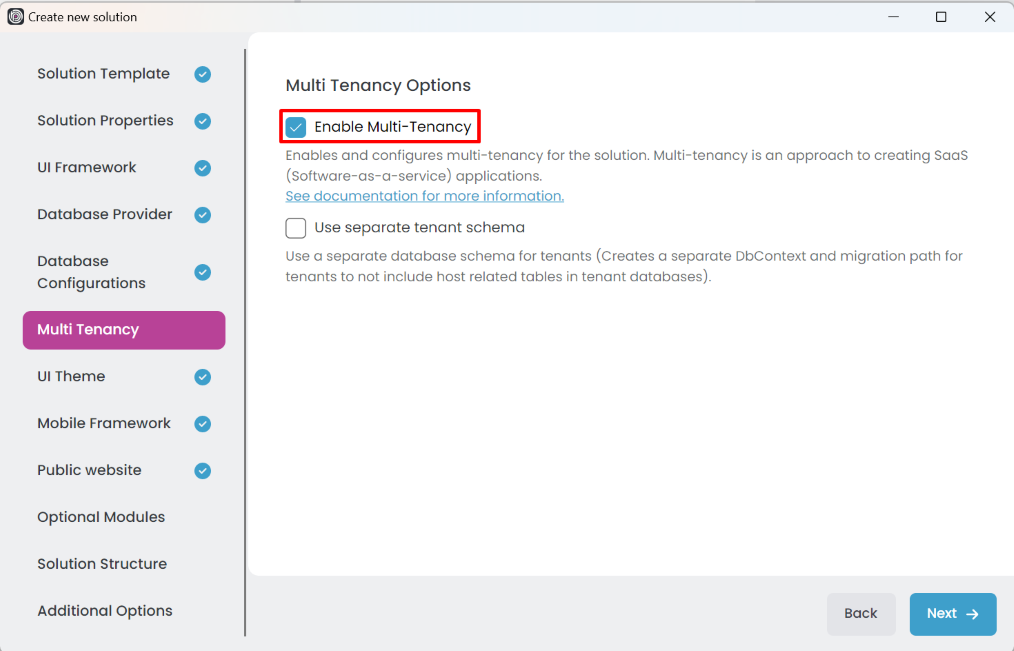Layered Solution: Multi-Tenancy
Some of the features mentioned in this document may not be available in the free version. We're using the * symbol to indicate that a feature is available in the Team and Higher licenses.
Multi-tenancy is a software architecture where a single instance(codebase) of software runs on a server and serves multiple tenants. Tenants are isolated from each other and can have their own data, configurations, and users. This document explains how the multi-tenancy mechanism works in the layered solution template. You can learn more about multi-tenancy in the Multi-Tenancy, Tenant Management and SaaS * documents.
Multi-Tenancy in Layered Solutions
The layered solution templates use the Multi-Tenancy architecture only if you Enable Multi-Tenancy * option while creating the solution.

You can use different databases for each tenant or a shared database for some tenants. In the *SaaS * module, you can specify the database connection strings in the Connection Strings Management Modal. All cached data is isolated by tenant. Each event, background job, and other data is stored with the tenant id.
You can use the ICurrentTenant service to get the current tenant information in your application.
public class MyService : ITransientDependency
{
private readonly ICurrentTenant _currentTenant;
public MyService(ICurrentTenant currentTenant)
{
_currentTenant = currentTenant;
}
public void MyMethod()
{
var tenantId = _currentTenant.Id;
var tenantName = _currentTenant.Name;
}
}
Additionally, you can use the DataFilter system to disable the tenant filter and list all data in the same database.
public class MyBookService : ITransientDependency
{
private readonly IDataFilter<IMultiTenant> _multiTenantFilter;
private readonly IRepository<Book, Guid> _bookRepository;
public MyBookService(
IDataFilter<IMultiTenant> multiTenantFilter,
IRepository<Book, Guid> bookRepository)
{
_multiTenantFilter = multiTenantFilter;
_bookRepository = bookRepository;
}
public async Task<List<Book>> GetAllBooksIncludingDeletedAsync()
{
//Temporary disable the IMultiTenant filter
using (_multiTenantFilter.Disable())
{
return await _bookRepository.GetListAsync();
}
}
}


























































